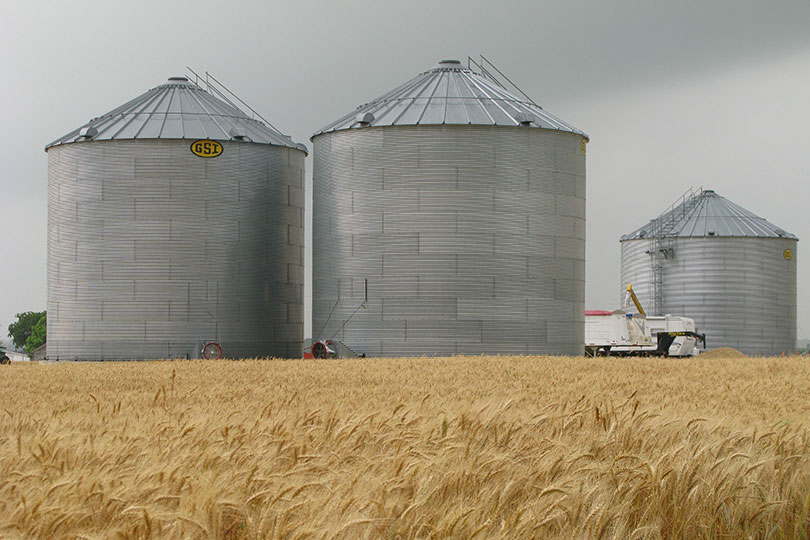By Jennifer Whitlock
Field Editor
Long-lasting impacts of the COVID-19 pandemic will continue to reverberate through global commodities markets in 2022. But other factors like addressing climate issues and increasing food production yields will also be important this year, according to Rabobank’s 2022 Agri Commodity Markets Research Outlook.
Rabobank’s report, titled “Hell in the Handbasket,” dives into 12 major commodity markets and offers insights into what each sector may face in another uncertain year.
“Agricultural commodity prices have increased by around 28% in the last year and by 40% above pre-pandemic levels. The increase in agricultural commodity prices is also exacerbated by other inflationary pressures in the economy, such as the astronomical rise in gas prices ahead of the northern hemisphere winter, labor scarcity, rising rents and a rapid increase in prices of inputs like fertilizer, crop protection products and machinery, among others,” Berry Marttin, Rabobank managing board member, wrote in a preface to the annual outlook. “Meanwhile, increasing costs for farmers threaten their profitability, even in the light of relatively high agricultural commodity prices.”
Key takeaways
In North America, increasing biodiesel and ethanol demand will pressure soy oil and corn supplies.
Drought in the U.S. Northern and Central Plains and a La Niña weather pattern in South America pose risks for yields in major crops, including wheat, corn and soybeans. Rabobank also mentioned the United States’ ongoing struggle with rapidly rising input and fertilizer costs as a limiting yield factor in 2022.
Overseas, European farmers are likewise facing higher input costs. Both Europe and Russia are expected to pull back on wheat exports at a time when food inflation is hitting Africa and the Middle East.
Rabobank predicts China will continue to import massive amounts of feed grains, putting even more pressure on limited global supplies.
Food inflation
“Like a spiral, the higher commodities prices go, the more buyers want to stock up, to avoid shortages and disruptions ahead and guarantee normal operations. For key food staples like wheat, exporting countries have been increasing export taxes to cool domestic prices, while importers have been trying to front-load their import programs to keep food inflation under check,” Rabobank economists wrote. “Amid the pandemic–still peaking in parts of the world–keeping a good supply of agricultural commodities, and food staples like wheat in particular, is a critical government goal to avoid further discontent.”
The authors added it is “highly unlikely” food prices will decline back to five- or 10-year averages because commodity prices are now supported by general economic inflation, as well as high shipping costs, energy and fertilizer prices and labor shortages.
Weather
Under a La Niña pattern—the second in as many years—weather in the Americas will not return to expected normal until at least the second quarter of 2022, Rabobank said. The last time agricultural commodity prices peaked this high was in 2012 after two consecutive La Niña events.
As global stocks in many commodities continue to decline, the ability of markets to absorb further supply shocks will be strongly tested, according to Rabobank’s predictions.
Commodities
Rabobank is bullish on sugar, cocoa and corn in 2022 and slightly bullish on soy oil and lean hogs.
But its economists are mostly bearish on several other commodities, including palm oil, soybeans, live cattle, soymeal, dairy, wheat and coffee.
A global wheat supply and demand deficit in 2021/2022 has been exacerbated by panic buying, the report’s authors said.
“Wheat, as a food staple, is the commodity where any potential shortage causes fear,” they wrote.
Expect tightness in the wheat market before spring crops are harvested in the northern hemisphere, Rabobank advised. Despite good prices, production will only increase slightly and a drop in demand for feed wheat will provide room for a small surplus to emerge later in the year.
The organization called the last couple of year’s corn prices “a COVID-comeback story for the ages,” citing a 75% gain from April 2020 to May 2021. Analysts say settled-but-lofty current corn prices will likely endure for the next two years.
Soybeans are likely at the end of a dramatic price increase, thanks to a modest rise in global stocks and negative demand. But soy oil-based biodiesel may open new doors in coming years.
In live cattle markets, Rabobank predicts the boxed beef cutout will begin narrowing in 2022 and fed cattle slaughter will fall slightly. But continued good domestic demand and a strong export showing will provide price support, keeping cattle markets steady.
Dairy markets are expected to fare slightly worse as “exceptional” Chinese demand softens, but overall Rabobank is only slightly bearish on dairy pricing.
Other challenges
Awareness of climate-smart farming practices, uncertainty arising from continued COVID-19 infections and supply chain pressures will make 2022 another interesting year, the report concluded.
“The global mindset around climate change has shifted…accounting and reporting standards will result in more attention and investments along the supply chain to reduce greenhouse gas emissions,” Martin wrote. “Furthermore, reviews of trade policy in several countries could incorporate an assessment of environmental standards in countries of origin in years ahead with uncertain consequences for the production and trade of agricultural products and farm inputs.”

